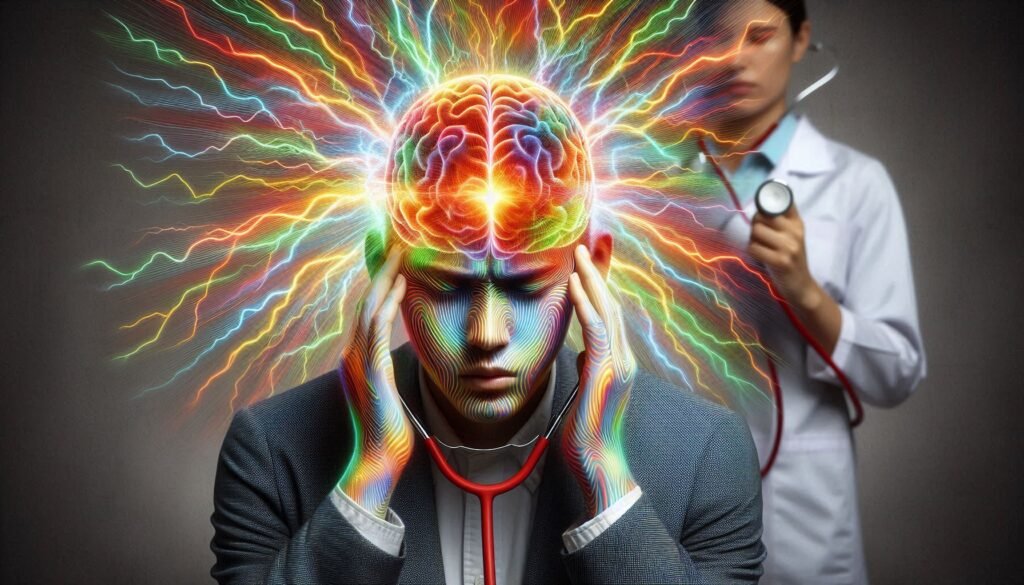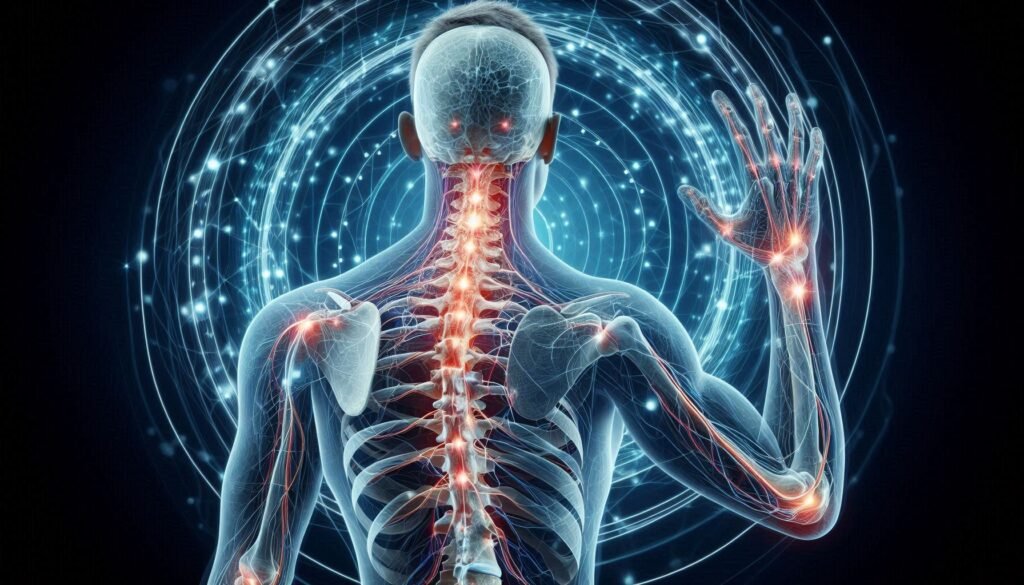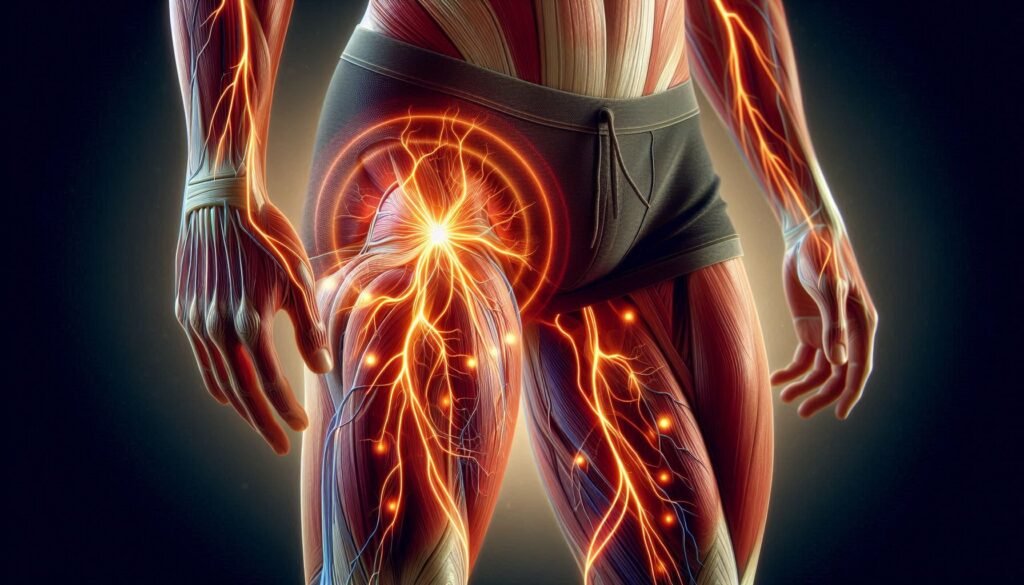Migraines are notorious for their debilitating pain, but there’s more to these headaches than meets the eye. Among the myriad of symptoms that accompany migraines, paresthesia often lurks in the shadows—misunderstood and frequently overlooked. This tingling or prickly sensation can manifest in various parts of the body during a migraine attack, leaving many sufferers confused and anxious about what they’re experiencing.
Understanding paresthesia is crucial not only for effective management but also for improving overall quality of life. Many people don’t realize it could signal something significant happening within their nervous system during a migraine episode.
As we dive into this multifaceted symptom, we’ll explore its characteristics, neurological underpinnings, and how to differentiate it from other conditions. By shedding light on “Paresthesia in Migraines: An Often Overlooked Symptom,” you’ll gain valuable insights that may change how you approach your own or loved ones’ migraine experiences.

Understanding Paresthesia as a Migraine Symptom
Paresthesia refers to abnormal sensations in the body, often described as tingling, prickling, or a “pins and needles” feeling. While most commonly associated with nerve damage or compression, it can also manifest during migraine attacks. This symptom is particularly distressing for those who experience it.
Many individuals report paresthesia occurring on one side of the body—typically affecting the face, arms, or legs. Though it may not be as well-known as other migraine symptoms like nausea or sensitivity to light, its presence can significantly impact a person’s experience during an attack.
Understanding why this happens involves recognizing that migraines are complex neurological events. The brain’s altered signaling pathways can lead to these unusual sensations. During a migraine episode, increased excitability in certain areas of the brain may influence sensory signals throughout the nervous system.
For many sufferers, identifying paresthesia as part of their migraine journey provides clarification and context for their experiences. This awareness is essential for effective management strategies moving forward.
Types of Migraines Associated with Paresthesia
Migraines can manifest in various forms, and some types are more likely to feature paresthesia. Migraine with aura is one of the most common associations. This type often precedes a headache phase, featuring sensory disturbances like tingling or numbness, typically affecting one side of the body.
Another variant is hemiplegic migraine. Here, individuals may experience temporary weakness alongside sensations of tingling or numbness. These symptoms can be alarming as they mimic strokes but usually resolve within hours or days.
Chronic migraines also warrant attention when discussing paresthesia. Those who suffer from this condition might frequently encounter neurological symptoms during their episodes. The recurring nature intensifies discomfort significantly.
Vestibular migraines present another layer of complexity. They involve dizziness and balance issues along with potential paresthetic sensations in extremities during an episode, making them particularly challenging for those affected to manage daily activities effectively.
Characteristics of Migraine-Related Paresthesia
Migraine-related paresthesia often presents as unusual sensations in the body. People may describe feelings of tingling, numbness, or a “pins and needles” sensation. These symptoms commonly occur on one side of the body, particularly affecting the face, arms, or legs.
The onset typically coincides with other migraine symptoms such as severe headache or aura. Some individuals might experience these sensations before headaches begin while others feel them during an attack. The duration can vary significantly; some may notice these feelings for just a few minutes while others could be affected for hours.
Patients frequently report that these sensations are fleeting but distressing. They can lead to anxiety about their health and exacerbate existing migraine discomfort. Understanding this symptom is crucial because it helps in recognizing patterns that differentiate migraines from other neurological issues.
Furthermore, the intensity of paresthesia can also fluctuate between attacks. This variability makes it essential for patients to track their experiences accurately over time for better management strategies.
The Neurological Basis of Paresthesia in Migraines
Paresthesia during migraines is often linked to neurological processes that involve the central and peripheral nervous systems. When a migraine occurs, abnormal brain activity can disrupt normal sensory processing. This dysfunction may result in sensations of tingling or numbness.
The phenomenon is primarily attributed to cortical spreading depression (CSD). CSD causes changes in electrical activity within the brain, leading to waves of altered neural function. As these waves spread, they can impact areas responsible for sensory perception.
Additionally, neurotransmitters like serotonin play a crucial role in this process. Fluctuations in serotonin levels are common during migraines and may influence how pain signals are transmitted through nerve pathways. This contributes to the development of paresthesias.
Furthermore, specific regions such as the trigeminal nerve system become activated during migraine episodes. This activation not only leads to headache pain but also affects sensory nerves, resulting in those characteristic tingling sensations many experience with their attacks.
Differentiating Migraine Paresthesia from Other Neurological Conditions
Paresthesia during a migraine can often be confused with symptoms of other neurological conditions. It’s essential to recognize the unique features of migraine-associated paresthesia for accurate diagnosis and treatment.
Typically, migraine-related paresthesia is localized to one side of the body, following the typical aura pattern. Patients may experience tingling or numbness in specific areas, such as the face or hands, which usually resolves once the headache subsides.
In contrast, conditions like multiple sclerosis (MS) can cause widespread sensations that are more persistent and may not correlate directly with headaches. Neuropathy also presents different characteristics; it tends to affect longer stretches of nerve pathways rather than isolated regions.
Additionally, transient ischemic attacks (TIAs) might mimic these symptoms but come with sudden onset weakness and speech difficulties. A thorough clinical evaluation is crucial when differentiating between these conditions to ensure proper management strategies are implemented effectively.
Triggers and Risk Factors for Migraine-Induced Paresthesia
Migraine-induced paresthesia can be triggered by various factors. Common triggers include stress, hormonal changes, and certain foods. For many individuals, food-related triggers such as aged cheeses, chocolates, and alcohol are significant contributors to migraine episodes.
Environmental influences also play a crucial role. Bright lights, strong odors, and loud noises can provoke migraines along with associated symptoms like paresthesia. Changes in weather or barometric pressure may further exacerbate these conditions for some people.
Certain medical conditions increase the likelihood of experiencing both migraines and paresthesia. Conditions such as anxiety disorders or depression often coexist with chronic migraines. Even sleep disturbances can pave the way for more frequent migraine attacks.
Genetics is another important factor to consider when assessing risk levels. A family history of migraines makes an individual more susceptible to similar experiences. Understanding these triggers helps manage expectations and informs effective coping strategies.
Diagnostic Approaches for Migraines with Paresthesia
Diagnosing migraines with paresthesia can be a complex process. Healthcare providers typically start with a thorough medical history and physical examination. This initial evaluation often includes questions about the frequency, duration, and characteristics of the migraine episodes. Understanding any associated symptoms like paresthesia is crucial.
Neurological examinations may follow to assess sensory functions and reflexes. Doctors might also conduct imaging tests such as MRI or CT scans if there’s suspicion of other underlying conditions. These tests help rule out serious issues that could mimic migraine symptoms.
Additionally, headache diaries are valuable diagnostic tools. Patients can track their migraine occurrences along with triggers and accompanying symptoms like tingling sensations. This information helps healthcare professionals tailor treatment plans more effectively.
Sometimes blood tests are necessary to exclude other potential causes for neurological symptoms. A comprehensive approach ensures accurate diagnosis and effective management of migraines accompanied by paresthesia.
Treatment Strategies for Managing Migraine-Related Paresthesia
Managing migraine-related paresthesia often requires a multi-faceted approach. Medications play a crucial role in alleviating symptoms and reducing the frequency of attacks. Triptans, for example, are commonly prescribed to address acute migraine episodes and may help lessen nerve-related sensations.
In addition to medication, lifestyle changes can significantly impact the severity of migraines and associated paresthesia. Staying hydrated, maintaining a regular sleep schedule, and managing stress levels are essential components of effective self-care strategies.
Physical therapy or acupuncture may also provide relief by improving circulation and reducing tension in the muscles surrounding nerves that could trigger paresthetic sensations during migraines. These alternative therapies can complement traditional treatments.
Cognitive Behavioral Therapy (CBT) is another beneficial option for individuals who experience anxiety related to their migraines. By addressing both psychological factors and physical symptoms, CBT helps patients develop coping mechanisms that mitigate the overall impact of migraine episodes on daily life.
The Role of Preventive Medications in Reducing Paresthesia Symptoms
Preventive medications play a crucial role in managing migraines, particularly for those experiencing paresthesia. These drugs aim to reduce the frequency and severity of migraine attacks, ultimately alleviating symptoms like tingling or numbness. Common classes of preventive medications include beta-blockers, antiepileptic drugs, and antidepressants.
Beta-blockers such as propranolol are often prescribed due to their effectiveness in stabilizing blood vessels and decreasing migraine triggers. Antiepileptic drugs like topiramate can help modulate nerve activity and prevent abnormal brain signals associated with migraines.
Antidepressants may also be beneficial, especially tricyclics that can enhance the pain threshold by influencing neurotransmitter levels. Each individual’s response will vary; therefore, finding the right medication requires patience and collaboration with healthcare providers.
In some cases, newer options like CGRP inhibitors show promise for reducing both headache intensity and accompanying neurological symptoms. Tailoring these therapies is essential for achieving optimal outcomes in managing paresthesia during migraines.
Lifestyle Modifications to Minimize Migraine-Induced Paresthesia
Lifestyle modifications play a crucial role in managing migraine-related paresthesia. Simple changes can significantly reduce the frequency and severity of migraines, thus minimizing associated symptoms like tingling or numbness.
Start by identifying and avoiding personal triggers. Keeping a headache diary can help pinpoint specific foods, stressors, or environmental factors that lead to migraine attacks. Common culprits include caffeine, alcohol, and certain cheeses.
Regular exercise is another effective strategy. Engaging in moderate physical activity such as walking or yoga not only reduces stress but also promotes overall well-being. Staying hydrated is equally important; dehydration can exacerbate migraines.
Establishing a consistent sleep schedule helps regulate your body’s rhythms. Aim for 7-9 hours of quality sleep each night to avoid fatigue-induced migraines. Additionally, practicing relaxation techniques—like mindfulness meditation or deep breathing exercises—can alleviate tension and lower anxiety levels.
Maintaining a balanced diet rich in fruits, vegetables, whole grains, and lean proteins supports neurological health while keeping blood sugar stable. By adopting these lifestyle adjustments thoughtfully and consistently, you can effectively manage paresthesia in migraines: an often overlooked symptom that deserves attention.


